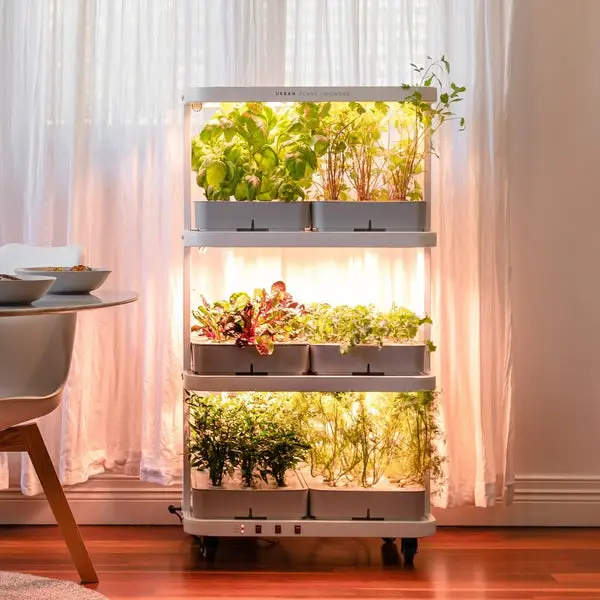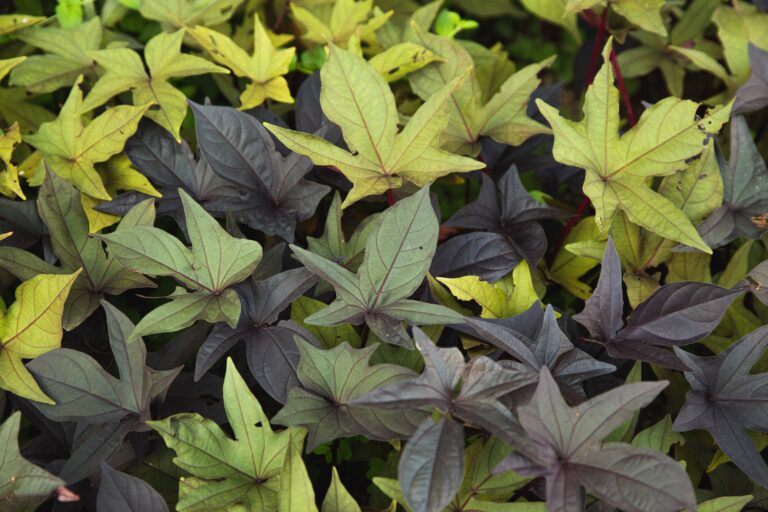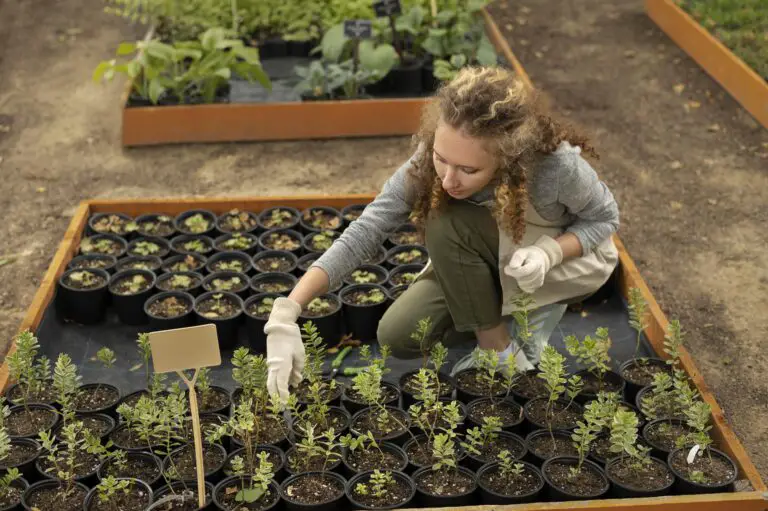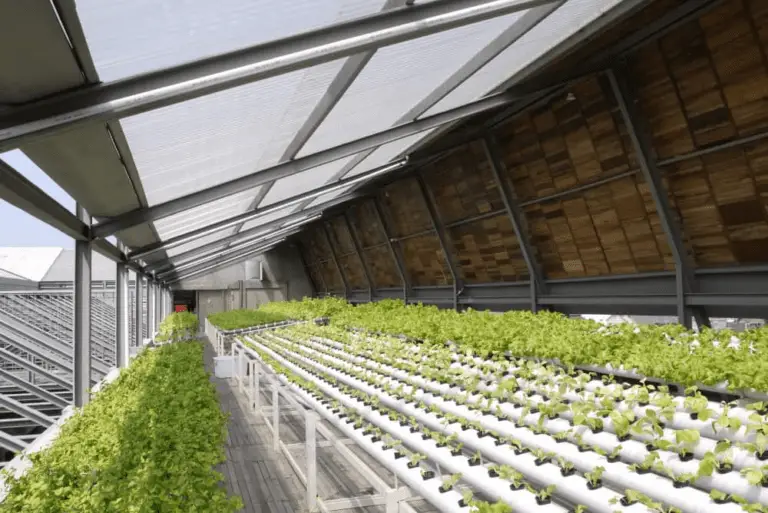Types of Hydroponics Systems: A Comparison of the Different Methods of Growing Plants in Water
Table of Contents
Nutrient Film Technique (NFT) System
The Nutrient Film Technique (NFT) system is a popular hydroponic method that allows plants to grow in a continuous film of nutrient-rich solution. In this system, a shallow channel or tube is used to deliver a thin film of nutrient solution to the plant roots. The roots are suspended in the channel, allowing them to absorb the necessary nutrients directly.
One of the key advantages of the NFT system is its efficient use of water and nutrients. With this method, the nutrient solution is recirculated, reducing the need for constant replenishment. This not only saves water but also helps to optimize nutrient uptake by the plants. Additionally, the NFT system promotes optimal air circulation around the roots, preventing waterlogging and ensuring adequate oxygen supply. This, in turn, encourages healthy root development and overall plant growth.

Deep Water Culture (DWC) System
Deep Water Culture (DWC) System is a popular hydroponic system that is widely used by gardening enthusiasts and commercial growers alike. This system, also known as the “raft system,” involves suspending the plant’s roots in a nutrient-rich solution, allowing them to absorb the necessary nutrients and oxygen from the water.
One of the key advantages of the DWC system is its simplicity and ease of use. It requires minimal setup and maintenance, making it suitable for beginners in the world of hydroponics. Additionally, this system promotes rapid plant growth due to the abundance of oxygen available to the roots. With proper oxygenation, plants can absorb nutrients more efficiently and develop healthier root systems. This leads to faster growth rates, higher yields, and overall healthier plants.
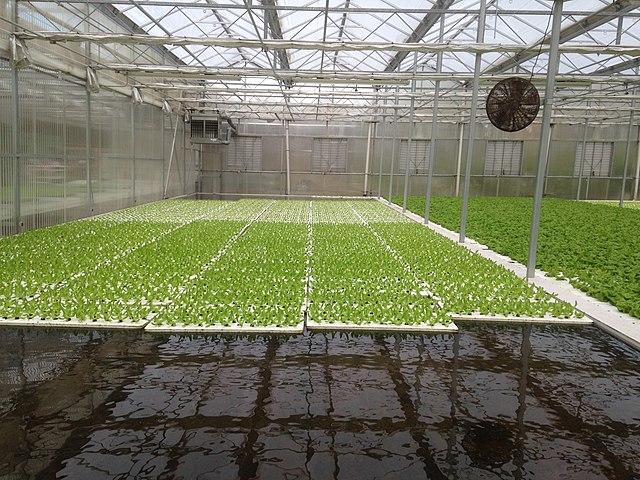
In the DWC system, it is crucial to regularly monitor and maintain the nutrient solution’s temperature, pH levels, and oxygenation. Any deviation from the ideal ranges can negatively impact plant health and growth. Therefore, it is essential to invest in quality equipment such as air pumps, air stones, and pH meters to ensure optimal conditions for plant growth. Additionally, maintaining the cleanliness of the system is important to prevent the growth of algae or pathogens that could harm the plants.
Overall, the Deep Water Culture (DWC) system offers a straightforward and effective method for growing plants hydroponically. Its simplicity and ability to support rapid plant growth make it a popular choice among gardening enthusiasts and commercial growers alike. However, proper monitoring and maintenance are essential to maximize its benefits and ensure successful plant cultivation.
Drip System
The Drip System is one of the most widely used hydroponic techniques due to its simplicity and efficiency. In this system, plants are securely held in a growing medium, while a nutrient-rich solution is delivered directly to their roots through a network of tubes and emitters. The controlled release of nutrients allows for precise feeding and optimal plant growth.
One of the main advantages of the Drip System is its versatility. It can be implemented in various settings, from small-scale home gardens to large-scale commercial operations. Additionally, this system offers excellent water efficiency, as it minimizes waste by delivering precise amounts of water and nutrients exactly where the plants need them. This not only reduces water consumption but also helps in avoiding nutrient runoff, making it an environmentally friendly choice.

Another notable benefit of the Drip System is its ease of use and low maintenance requirements. Once set up, the system operates on an automated schedule, delivering nutrients to the plants at regular intervals. This eliminates the need for manual watering and ensures a consistent nutrient supply, promoting healthy plant development. Additionally, the Drip System allows for easy monitoring of pH and nutrient levels, enabling growers to make necessary adjustments for optimal plant health. These factors make the Drip System an attractive option for both novice and experienced hydroponic enthusiasts seeking a reliable and efficient cultivation method.
Aeroponic System
Aeroponic systems are a cutting-edge form of hydroponic gardening that allows for the cultivation of plants without the need for soil. Instead, plants are suspended in air and their roots are misted with a nutrient-rich solution. This mist provides plants with the essential nutrients they need to grow and thrive, while also ensuring that oxygen is readily available to the roots. The combination of nutrient and oxygen supply in aeroponic systems promotes rapid and efficient plant growth, leading to higher yields and healthier plants.
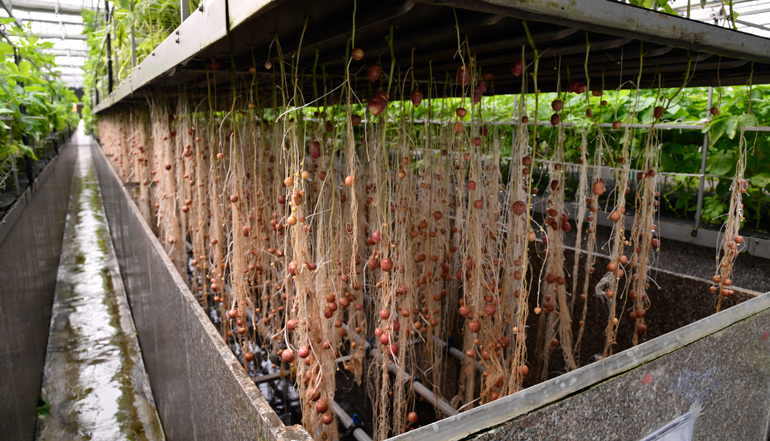
One of the key advantages of aeroponic systems is the ability to maximize space utilization. By suspending plants in air, vertical farming becomes a viable option, enabling farmers to grow a larger quantity of plants in a smaller footprint. This is particularly beneficial in urban environments where land is limited. Moreover, the misting system in aeroponics allows for precise control over nutrient delivery, ensuring that plants receive the exact amounts they need. This precise control minimizes resource wastage and maximizes plant health and productivity. Additionally, the lack of soil in aeroponic systems reduces the risk of soil-borne diseases and eliminates the need for extensive soil preparation, contributing to sustainable and efficient agriculture.
Wick System
The wick system is a simple and low-cost hydroponic system that is perfect for beginners or those with limited space. It operates on the principle of capillary action, where a wick is used to draw the nutrient-rich solution from a reservoir to the plant roots. This system requires no electricity or pumps, making it easy to set up and maintain.
One of the advantages of the wick system is its simplicity. With just a few basic components, such as a reservoir, growing medium, wick, and nutrient solution, you can start growing plants hydroponically. The wick system is also highly versatile, allowing you to use a variety of growing media, such as perlite, vermiculite, or coconut coir. This flexibility enables you to choose the growing medium that best suits the specific needs of your plants. Additionally, since plants are directly supplied with the necessary nutrients through the wick, there is no risk of over or underfeeding, providing a consistent supply of nutrients to promote healthy plant growth.
While the wick system is convenient and beginner-friendly, it does have some limitations. The wicking action can be slow, resulting in slower nutrient uptake by the plants. This may affect the growth rate or yield of certain crops that require rapid nutrient absorption. Additionally, the wick system may not be suitable for larger or more demanding plants that require a higher nutrient concentration. As the wick system relies solely on capillary action, it may struggle to deliver sufficient nutrients to satisfy the needs of larger plants. Furthermore, the wick can become clogged over time, potentially affecting the system’s efficiency. Regular monitoring and maintenance are essential to prevent any potential issues and ensure optimal performance.
In conclusion, the wick system offers a simple and cost-effective way to start a hydroponic garden. Its ease of use and low maintenance make it an attractive option for beginners or individuals with limited resources. However, it may not be suitable for all plant varieties or larger-scale operations due to its slower nutrient uptake and potential size limitations. Nevertheless, with proper care and attention, the wick system can be a successful and rewarding hydroponic growing method.
Ebb and Flow System
The Ebb and Flow system, also known as the flood and drain method, is a popular hydroponics system among gardening enthusiasts. This system operates by periodically flooding the plant roots with a nutrient-rich solution and then allowing the excess solution to drain away.
One of the key advantages of the Ebb and Flow system is its ability to closely mimic natural watering cycles, which can promote healthy root development and nutrient uptake. By alternating between flood and drain stages, this system provides plants with both water and oxygen, creating an optimal environment for growth. Additionally, periodic flooding helps to prevent the buildup of harmful pathogens and salts in the root zone, reducing the risk of disease and nutrient imbalances.
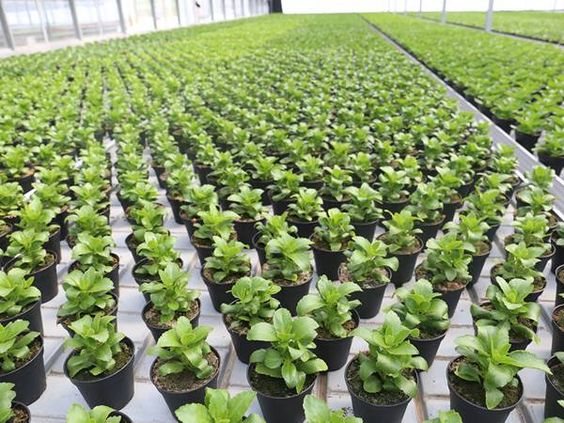
Overall, the Ebb and Flow system offers a versatile and user-friendly option for hydroponic gardening. Its simple design and flexibility make it suitable for various plant types and sizes, making it a popular choice among both beginners and experienced growers. Stay tuned for more information on other hydroponics systems and their benefits.
• The Ebb and Flow system, also known as the flood and drain method, is a popular hydroponics system among gardening enthusiasts.
• This system operates by periodically flooding the plant roots with a nutrient-rich solution and then allowing the excess solution to drain away.
• One of the key advantages of the Ebb and Flow system is its ability to closely mimic natural watering cycles, which can promote healthy root development and nutrient uptake.
• By alternating between flood and drain stages, this system provides plants with both water and oxygen, creating an optimal environment for growth.
• Additionally, periodic flooding helps to prevent the buildup of harmful pathogens and salts in the root zone, reducing the risk of disease and nutrient imbalances.
• Overall, the Ebb and Flow system offers a versatile and user-friendly option for hydroponic gardening.
• Its simple design and flexibility make it suitable for various plant types and sizes
.• This makes it a popular choice among both beginners and experienced growers.
Stay tuned for more information on other hydroponics systems
Vertical Farming System
Vertical farming is a revolutionary system that allows plants to be grown in vertically stacked layers, utilizing limited space in urban environments more efficiently. This innovative approach to farming has gained significant attention in recent years, as it offers a solution to the challenges of land scarcity and food demand. By utilizing advanced technologies such as hydroponics or aeroponics, vertical farming eliminates the need for soil and maximizes resource efficiency, including water and nutrients. This system also provides precise control over environmental variables such as temperature, humidity, and lighting, allowing for optimal plant growth and productivity.
One of the key advantages of vertical farming is its ability to overcome the limitations of traditional agriculture by reducing the reliance on arable land. With the world’s population projected to reach over 9 billion by 2050, the demand for food will continue to rise. Vertical farming offers a promising solution to meet this demand sustainably. By growing crops in controlled indoor environments, vertical farms can operate year-round, regardless of weather conditions, ensuring a constant and reliable food supply. Additionally, vertical farming significantly reduces the use of pesticides and herbicides, making it a more environmentally friendly option compared to conventional farming methods.
However, despite its numerous benefits, vertical farming also presents certain challenges and considerations. The initial setup costs of implementing a vertical farming system can be substantial, including investments in infrastructure, lighting, irrigation systems, and advanced technology. The energy requirements for maintaining the indoor environment, including artificial lighting and temperature control, can also be significant. Additionally, there are concerns about the scalability and cost-effectiveness of vertical farming for large-scale commercial production.

Overall, vertical farming holds tremendous potential to revolutionize the way we grow our food, especially in urban areas where space is limited. It offers a sustainable and efficient solution to the increasing global demand for food, while minimizing the environmental impact of agriculture. With ongoing advancements in technology and further research, vertical farming has the potential to become a viable and widespread method for cultivation, providing a secure and resilient food system for the future.
Aquaponics System
The aquaponics system is a unique and innovative method of growing plants that combines aquaculture and hydroponics. It is a closed-loop system where fish waste provides the necessary nutrients for plant growth, while the plants filter and purify the water for the fish. This symbiotic relationship ensures a sustainable and eco-friendly approach to cultivation.
One of the main advantages of aquaponics is its ability to maximize space and resources. Since the system is vertically stacked, it allows for high-density planting, making it ideal for urban farming or areas with limited land availability. Additionally, by utilizing fish waste as the nutrient source, the need for traditional fertilizers is eliminated, reducing costs and minimizing environmental pollution. The system also requires less water compared to conventional soil-based agriculture, making it a water-efficient option in regions prone to drought.
Aquaponics systems can be set up on various scales, from small home gardens to large commercial operations. The versatility of the system allows for the cultivation of a wide range of crops, including leafy greens, herbs, and even fruit-bearing plants. With proper monitoring and control of conditions such as water temperature, pH levels, and nutrient balance, aquaponics offers a consistent and reliable yield of high-quality produce throughout the year.
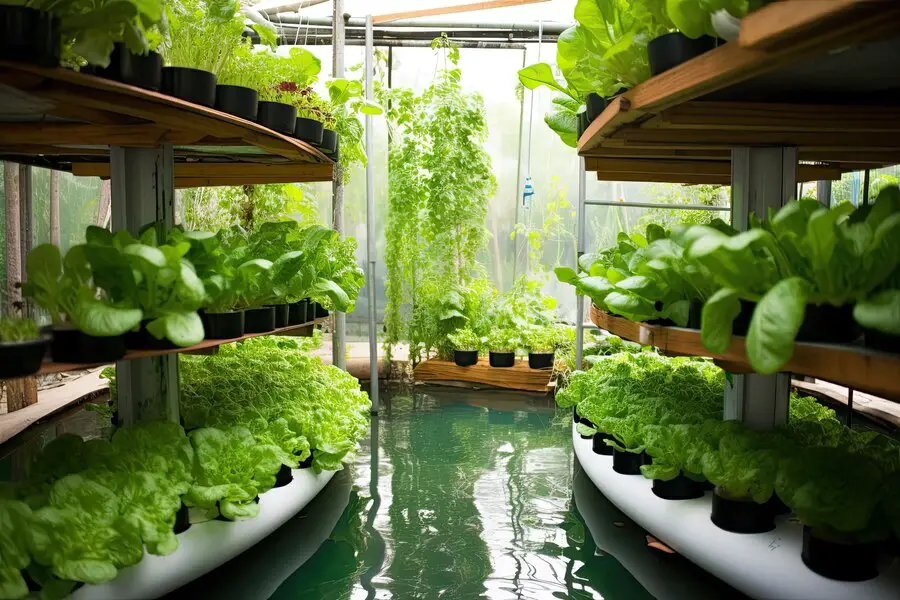
Kratky Method
The Kratky method, developed by Dr. Bernard Kratky, has gained popularity among hydroponics enthusiasts due to its simplicity and low-cost setup. Unlike other hydroponic systems that require complex equipment and constant monitoring of nutrient levels, the Kratky method is a passive hydroponics system that requires minimal intervention.
In the Kratky method, plants are grown in containers filled with a nutrient solution, and the roots are suspended in the solution without the need for an air pump or water circulation system. This unique approach relies on the plant’s ability to take up oxygen from the air, creating a natural balance of oxygen and carbon dioxide within the container. As the plants consume nutrients and water, the solution level gradually decreases, creating an air gap between the roots and the solution. This process allows the roots to receive adequate oxygen, promoting healthy growth.
One of the advantages of the Kratky method is its simplicity, making it accessible to beginners in hydroponics gardening. It requires no electricity or complicated equipment, making it a cost-effective option for those looking to start small-scale hydroponic projects at home. Additionally, the passive nature of the system means it requires minimal monitoring, making it a time-saving option for busy individuals. However, it’s important to note that the Kratky method is most suitable for smaller plants with shorter growth cycles, as it may not provide optimal conditions for larger or longer-term crops.
Passive Hydroponics System
Passive hydroponics is a popular system among gardening enthusiasts for its simplicity and low maintenance requirements. Unlike other hydroponic systems that rely on pumps or other mechanical devices, passive hydroponics utilizes a wicking medium to deliver nutrients to the plants. This wicking medium, such as perlite, vermiculite, or coconut coir, acts as a reservoir for the nutrient solution, which is then drawn up by the plants’ roots through capillary action.
One of the key advantages of passive hydroponics is its ability to provide a constant supply of nutrients directly to the plants, eliminating the need for manual feeding. This makes it a particularly attractive option for those who may have limited time or lack experience in hydroponic gardening. Additionally, this system promotes efficient water use, as excess nutrient solution is recirculated back into the reservoir, minimizing waste. Passive hydroponics can be used for a variety of plants, from leafy greens to flowering herbs, making it a versatile and cost-effective choice for home gardeners.
Hybrid Hydroponics System
The Hybrid Hydroponics System is a combination of different hydroponic techniques, strategically designed to maximize plant growth and optimize nutrient uptake. By integrating various systems into one, this method offers a wide range of benefits for gardening enthusiasts.
One of the key advantages of the Hybrid Hydroponics System is its ability to provide flexibility in nutrient delivery. This system allows growers to utilize different methods, such as Nutrient Film Technique (NFT), Deep Water Culture (DWC), Drip System, and more, depending on the specific needs of their plants. By customizing the nutrient delivery based on plant requirements, growers can achieve optimal growth and higher yields.
Additionally, the Hybrid Hydroponics System promotes better root development and increased oxygenation. The integration of different systems ensures that the roots receive ample oxygen, promoting better nutrient absorption and preventing issues such as root rot. This results in healthier and more robust plants, suitable for various crops and plant species.
With its versatility and ability to enhance plant growth, the Hybrid Hydroponics System is a promising option for gardening enthusiasts looking to optimize their hydroponic setup. By harnessing the benefits of multiple techniques, this system offers a comprehensive solution that can help achieve remarkable results in indoor gardening.

Benefits of Hydroponics Systems
Hydroponics systems offer numerous benefits that make them a popular choice among gardening enthusiasts. One of the key advantages is the efficient use of water. In traditional soil-based gardening, a significant amount of water is lost through evaporation and runoff. However, in hydroponics systems, water is recirculated and reused, resulting in up to 90% less water consumption compared to traditional methods. This not only helps conserve water but also reduces the overall environmental impact.
Another benefit of hydroponics systems is their ability to maximize crop yields. By providing plants with a precisely balanced nutrient solution, hydroponics allows for optimal growth and development. Without the limitations of soil composition, plants can access nutrients more efficiently, leading to faster growth rates and larger harvests. Additionally, the controlled environment in hydroponics systems minimizes the risk of pests, diseases, and weeds, further enhancing productivity. Whether it’s growing leafy greens, herbs, or even exotic fruits, hydroponics systems offer the potential for higher yields in a shorter period.
Challenges and Considerations in Hydroponics Systems
The practice of hydroponics offers numerous benefits for gardening enthusiasts, from increased crop yields to reduced water usage. However, like any gardening method, there are also challenges and considerations that hydroponic growers must be aware of. One of the primary challenges involves maintaining proper nutrient balance in the growing solution. Achieving the right balance of essential nutrients, such as nitrogen, phosphorus, and potassium, is crucial for the healthy growth and development of plants in a hydroponic system. Imbalances can lead to nutrient deficiencies or toxicities, impacting the overall health and productivity of the plants.
In addition to nutrient management, another consideration in hydroponics systems is the control of pests and diseases. Since hydroponic plants are grown in a soilless medium, they may be more vulnerable to certain pests and diseases compared to traditional soil-based gardening. Common pests in hydroponics include aphids, spider mites, and whiteflies, while diseases like root rot and powdery mildew can also pose a threat. To mitigate these risks, hydroponic growers need to implement proactive measures, such as regular monitoring, integrated pest management strategies, and maintaining a clean and sterile environment to prevent the spread of pathogens.
What is the Nutrient Film Technique (NFT) system in hydroponics?
The NFT system is a hydroponic technique where a thin film of nutrient-rich water flows over the roots of the plants, providing the necessary nutrients.
How does the Deep Water Culture (DWC) system work in hydroponics?
In the DWC system, plants are suspended in a nutrient solution with their roots submerged in water, allowing for direct nutrient absorption.
Can you explain the Drip System in hydroponics?
The Drip System involves slow and controlled dripping of nutrient solution onto the base of each plant, providing a continuous supply of nutrients.
How does the Aeroponic System function in hydroponics?
The Aeroponic System involves misting the roots of plants with a nutrient solution, providing oxygen and nutrients directly to the roots.
What is the Wick System in hydroponics?
The Wick System is a passive hydroponic technique where a wick is used to draw nutrient solution from a reservoir to the plant’s roots.
Can you explain the Ebb and Flow System in hydroponics?
The Ebb and Flow System involves periodically flooding the plant roots with nutrient solution and then draining it back into a reservoir.
How does the Vertical Farming System work in hydroponics?
The Vertical Farming System utilizes vertical space to grow plants in stacked layers, maximizing the use of space and increasing crop yields.
What is an Aquaponics System in hydroponics?
The Aquaponics System combines hydroponics with aquaculture, where fish waste provides nutrients for the plants, and the plants purify the water for the fish.
Can you explain the Kratky Method in hydroponics?
The Kratky Method is a passive hydroponic technique where plants are grown in containers with a nutrient solution that does not require any pumps or electricity.
What is Passive Hydroponics System in hydroponics?
The Passive Hydroponics System uses a wicking medium, such as perlite or coconut coir, to deliver nutrients to the plant roots without the need for pumps or electricity.
How does the Hybrid Hydroponics System work?
The Hybrid Hydroponics System combines different hydroponic techniques, such as NFT and DWC, to optimize plant growth and nutrient delivery.
What are the benefits of using hydroponics systems?
Hydroponics systems offer benefits such as efficient water usage, faster plant growth, reduced need for pesticides, year-round cultivation, and higher crop yields.
What are the challenges and considerations in hydroponics systems?
Some challenges in hydroponics systems include maintaining appropriate nutrient levels, preventing disease and pest infestations, managing pH and temperature, and ensuring proper lighting and ventilation.

Kanike Sreekanth, a prolific writer at SouthElMonteHydroponics, brings a unique blend of creativity and scientific rigor to the table. With a degree in Horticulture from a prestigious institution, Kanike’s expertise spans hydroponic farming, plant biology, and agricultural sustainability. Their passion for exploring innovative cultivation methods and promoting environmental stewardship drives them to uncover new insights in the realm of hydroponics. Kanike’s writing serves as a conduit for sharing their knowledge and inspiring others to embrace alternative farming practices for a more sustainable future.

